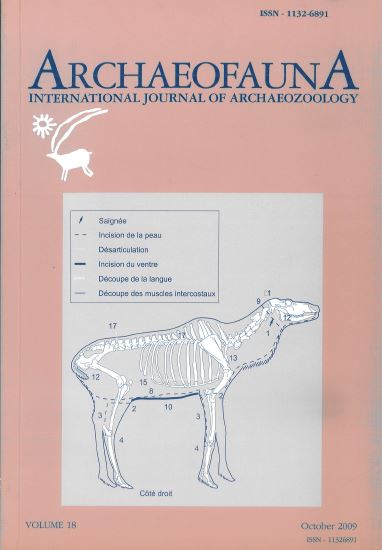A comparative study of analytic techniques for skeletal part profile interpretation at El Mirón Cave (Cantabria, Spain)
Keywords:
Skeletal part profiles, Utility Index, Bone density, Arp, ABCml, Magdalenian, El Mirón CaveAbstract
The analysis of the skeletal part profiles identified at archaeological sites is of great significance as they hold valuable information about the life ways of the human groups who produced them, and simultaneously reflect post-depositional processes. As a consequence, the interpretation of such profiles, in combination with the identification of bone surface modification and bone fragmentation patterns are essential to any archaeozoological study as they prevent the creation of false economic explanations. Nevertheless, both the methodological and conceptual aspects of skeletal part studies are currently under intense debate within the scientific community. The archaeozoological literature provides several techniques which are in principle mutually exclusive, to deal with the problem. This paper presents a practical application of these techniques to three Magdalenian levels from El Mirón Cave (Cantabria, Spain). The study verifies the potential of each method by assessing its advantages and disadvantages, and improves interpretations about the economic behaviour of the human groups who occupied the cave. In particular, the residential function of the cave has been confirmed.

